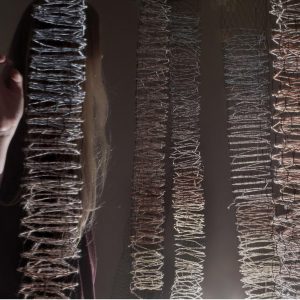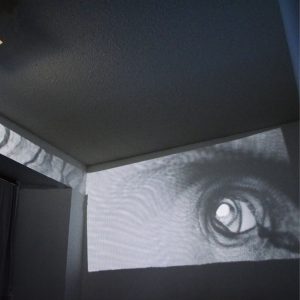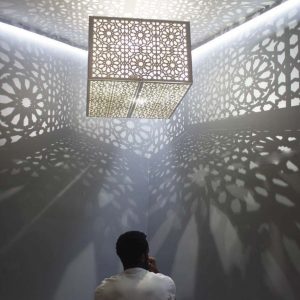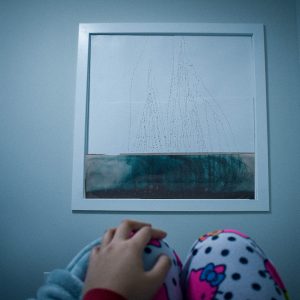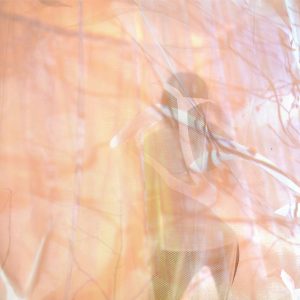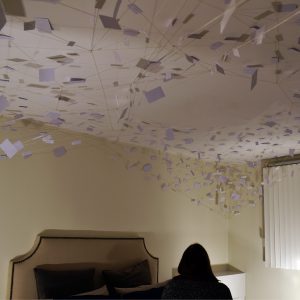
We are pleased to announce YEE-O 2020 – Year End Exhibition – Online edition for this 2019-2020 academic year. This annual event celebrates the hard work and creative achievements of over 500 undergraduate and graduate students from every unit and level in the Faculty of Architecture at the University of Manitoba. Unfortunately, COVID-19 led to the cancellation of this in-person event, but sharing and celebrating student achievements must go on!
P2 ROOM | RITUALS
Instructors: Mohamad Araji, Jae Sung Chon, Ryan Coates, Katherine Isaac, Alyssa Schwann, Kim Wiese
As encapsulated worlds, interior spaces speak to the undeniably humanist nature of architecture – evoking the interconnected agencies of both time and space, while conveying compelling aspects of who we were, who we are, and who we want to be. They transmit our personal desires, collective anxieties, collective aspirations, – revealing temporality and ephemeral qualities that physically document cultural values and impermanence. More specifically, interior architecture privileges the phenomenological parameters of design by emphasizing time and inhabitation.1
…ritual action is not only the product but is also the means of a noetic quest, an exploration which seeks to discover the right action or sequence of actions.2
Inquiry: How do we inhabit a space? Can we observe beyond the functional description of our presence? Are there detectable patterns or rituals, beyond functional alignments? What are the elements that affect or define the rituals? How can we detect, discuss, question and/or change the nature of these patterns? Can we affect the ritual(s) by transforming or introducing attributes within the space? Can we insert, incur, and or invent new rituals? How far can we modulate the pattern from familiar to unfamiliar? Can we forge a new spatiality through such modulation?
Retreat
Lauren Bennett
When changing the feeling of a space, normal rituals and routines are changed. Waking up and falling asleep to the rising and setting sun changes how a person begins and ends their day. During a sunset the shadows of the trees are outlined by the colourful sky. This rising and setting of the sun which surrounds a person when they are camping, was the ritual chosen to explore during this project
Room | Ritual
Emily Birch
The bedroom is a space which for many people acts as a sanctuary, but for some it does not provide that comforting feeling. After the bedroom became a place that felt cold and unwelcoming and held many memories of anxiety attacks, it was interesting to look at ways in which colour and material choice could influence the feeling of the entire room. The gentle sweeping drapes which covered the walls made the entire space feel soft and cozy. The layering of materials provided layers of depth giving a perceived separation between the room and the real world, especially when the afternoon light shone through the window. Finally, the word searches to distract the mind were filled with positive and uplifting words which further enhanced the warm welcoming feeling of the room. The project successfully changed the way that the room was interacted with as well as feeling similar to a hug.
Mise en Scene
Dallin Chicoine
The ritual involved with this room is, in a general sense, watching films. Although the simple gesture may often go unthought of, we watch films as a way to escape the conventions of our own lives and place our attention into that of another’s, much like reading a novel. The experience this room provides is a very similar, but authentic approach to escaping our mental reality to enter another, but instead entering a physical realm that engages all the senses, as apposed to very simply watching a film on a screen. The final outcome is intended for the viewer to realize many of the minor details that go into making films, especially of the classic era.
Projection
Danielle Dubois
The idea of the project was to study the rituals of the space. In this west-facing bedroom, strong sunlight projected through the space at the end of the day and created interesting patterns on the opposing wall. To emphasize this, clear fishing line was used to map out the sunlight pattern projecting from the window to the wall. In the end, this created an awareness of something that wasn’t always appreciated or realized. The obstruction forced a constant awareness of the rituals of the space and ultimately changed the habitant’s rituals.
Monaural
Nick Epp
Can we observe beyond the functional description of our presence?
The understanding of spatial context is crucial for the sounds situated about the room to be relevant to the listener’s concept of time.
From far away work vehicles fade in and out, meanwhile closer up a steady rotation of foot-steps in the unit above and stairwell behind, and the hundreds of people passing by each day Sounds will be focused from the outside in, changing the sonic exterior to a sense of being a single element inside the room
Immerse
Conrad Jabo
During this project, we were expected to further our understanding of patterns/rituals within a personal space (i.e. own bedroom) and test and document elements that affect the pattern or ritual.
Through a series of behavioral observations, I discovered my ritual of dimming the light using a garment, which sets an environment conducive for sleep. This evolved into a more in-depth study on how light spreads in my room and how one can induce a more enhanced dreamlike atmosphere before sleep.
The final box was made of plywood and had wire mesh cone on the inside, which would attach to the light source in the room. The wire mesh was able to make high-quality 3D shadows with excellent sharpness.
Atmospheric Nosie
Taylor Kulczycki
White noise is an inseparable quality of daily life. The ritual of listening to white noise during sleep and meditation are the most important aspects of this intimate space. This project focused on exploring how the atmospheric conditions altered and transformed the pre-existing rituals. The continuous and evenly distributed nature of white noise relaxes and calms the body’s internal systems. The transparent netting protruding above the bed, creating a moment of separation between itself and the existing elements within the room is reminiscent of the background and unnoticeable nature of white noise.
Imminence
Nick Lupky
“Imminence” was a project used to draw out the deepest, darkest fears of the unknown. A comfortable escapism was transformed into a dreary confrontation with the idea of death. The project used lights, projections, sounds, color, and tape to exude the imminent passage of time in an otherwise tame space.
T Party
Tiana Matic
Featured works from project 2, T PARTY, demonstrate the transformed state of my bedroom after developing my vision of wonderland into a reality. P2 pushed my boundaries as I converted my most personal space into a dream-like world of my own.
Room | Ritual
Aynur Omar
The bedroom being an intimate, warm place, inherently encapsulates daily rituals. However, what makes a room warm? Can a room be a separate entity that undergoes its own rituals? This project’s essence lies within the encapsulation of exterior conditions within the room’s interior.
Sunlight, wind and temperature form a created, flexible Being inside the room, which adheres to these alternating conditions. The room’s ritual can be what the window allows into the room, whether it be temperature, wind flow, or light. Through the sensual capability of a being, it becomes tangible, visible, and audible to co-habit with. The tangible Being not only has its own ritual, but living with it alters one’s own habitation in the room. The Being is visually and phenomenally warm, differently, every hour of the day. With its physical unfamiliarity, co-habitation allows for familiarity to grow with the Being, and there is more to discover in ritual changes such as sleeping patterns and movement along the bed and around it.
Room | Ritual
Falmata Osman
Everyday spaces can become sacralised as a result of the daily rituals we perform and by provoking the same feelings as traditional sacred spaces such as relaxation, reflection, and contentment.
When asked what a sacred space is most people often think temples, churches, and other religious and spiritual institutions. These sacred spaces give us belonging and connection to a higher power. But they often forget the spaces we occupy daily can become sacralised because of the same feelings they provoke as traditional sacred spaces—feelings of relaxation, reflection, and contentment that put the mind and eyes at ease—through the rituals we perform.
Plastic Initiative
Shane Patience
Plastic Initiative is a spatial experience that harnesses the reflection and anxiety of my personal space in order to generate productive thought. Today, there is not a single place on earth unaffected by human development by human development and as global temperatures rise we see more flooding, more forest fires and more frequent and sever storm.
By creating a funnel in my bedroom using single use plastic bags I hope for force a conversation with myself with regards to the state of our environment and the part I play in it. The plastic controls movements and commands focus toward my window – my connection to the outside world
The Thought Room
Angeline Reyes
How can one modify an already existing space that would allow for the fluidity of thinking? What material can show the fluidity of patterns between layers of an image? The Though Room enhances the sacred space between the bed and the window. Inspired by different flows in nature, it is a kinetic room installation that strives for mindfulness and the refocusing of thoughts.
Room | Ritual
Sabba Rezai
For Room/Ritual, the ritual of sweeping became altered. Stripped down, exaggerated + simplified to its fundamental movements. This allowed for a deeper understanding of the simple strokes of the broom/brush. Through this act, a new consideration to sweeping and its rich historical and cultural past emerged.
Room | Ritual
Nica Rugay
I share a room with my grandmother. She spends more time and has more stuff in it than I do. Because of this, I feel like I am trespassing in a space that is supposed to be mine.
The aim of the design is to evoke the feeling of being taken over. All of my stuff is wrapped in white paper while my grandmother’s stuff is left alone. This represents my grandmother gaining control of my room and I am losing my claim over it. It shows boundaries of which part of the room is mine and which part is hers to show how much she has taken over.
Wandering
Marie Seno
I wander through my room, feeling the calm and worldly interaction I had with the forest. The experiences I shared with the outdoor environments took another entity within the interiors of the space. The process of this project allowed me to create a space of being. The more layers I added, the more delicate patterns I applied onto the sheets, the more I had felt engulfed in a forest. The room had become a forest of its own, taking qualities like permeability and tranquility. The wanderer can feel the brush of the ‘leaves’ or gaze up to find themselves immersed in the shadows created by the ‘trees’ through the layer of sheets. My rituals were enhanced in this process of making, finding the being of space to cohabit and compliment with my routines.
Introspection
Gen Taylor
The room embodies the practice of mindfulness and the installation simulate the practice of mindfulness and thought meditation. The thought is acknowledged and written down. The thought can be filed away in the box to clear the mind. In this case, the room is a simple white box, filled with pieces of paper, or thoughts, which are suspended in an entangled web. The thoughts hang just out of reach from the writer and not harbor in the writers’ mind, weighing them down. Above the writer, is a clear circle where the web of thoughts stops. The purpose of leaving this small area clear is to demonstrate three things. The stillness of the practice, the patience to complete the practice, and to show that with each use of the practice, the mind becomes a bit clearer.
Room with a View
Teagan Vincent
Room with a View aims to break the barrier between the exterior and interior spaces, by bringing together a place in which I ritually view into space I ritually occupy. This is achieved through the use of a camera obscura and the layering of mylar panels in the orientation of a deconstructed Composition II by Piet Mondrian. Room with a View creates a captivating dream- like reality which depicts an alternate perspective of a view I thought I had already seen in all forms. Through Room with a View, a deeper understanding and appreciation for both spaces is accomplished.
My Painted Reality
Brenna Waylett
By painting my room to look like I painting itself, I brought to life my painting ritual. Both in the act of creating the new space and by putting myself within the new artistic world. After the room was completed and I was living within my new painted reality, I began to feel a part of the painting and understand how important this ritual is to me. It is not just about the act of painting but more about how this act makes me understand, express, and connect with my surroundings.
1Marinic, G., The Interior Architecture Theory Reader, (Routledge 2018), 27.
2 Theodore Jennings, “On Ritual Knowledge,” Journal of Religion 62, no. 2 (1982): 114.

